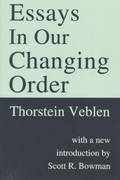Question
Google is the owner of Android, the operating system used by a large fraction of smartphones. Google also owns a search engine(Google)and a browser (Chrome).
Google is the owner of Android, the operating system used by a large fraction of smartphones. Google also owns a search engine(Google)and a browser (Chrome). This gives Google the possibility to default users of Android phones into using its products. As part of a settlement with the European Commission(competition regulator), Google agreed to offer new phone users "choice screens" presenting several options for Browser/search engine. To determine the identity of competitors appearing on the screen Google chose to use an auction. Search engines and web browsers make money by showing ads and by selling users' information. Some companies offer services that protect users' information(e.g., Bingor DuckDuckGo). But there are less well-known services that most informed users wouldn't choose. These services rake more profit per user, as they apply substantially less stringent privacy measures. In this question, we'll assume for simplicity that there is only one high-quality competitor (H) and one low-quality competitor(L), and that they are competing for a single slot on the choice screen as an alternative to Google(in practice, the numbers are larger). We will also assume that the probability that a user would choose H over Google is 15% and that the probability they would choose Lover Google is 0.1%. Furthermore, we will assume that H's profit from each user is $10,andL'sprofit is $20.This information is known to both competitors. It is summarized in the table below:
Competitor Profitper installation Probability of installation
H $10 15%
L $20 .1%
Google decided to make H and L submit bids per installation, and run an auction to determine the winner. The winner will be displayed for a while on all choice screens. In this question, we will imagine this period represents one million choice screens.
Assume that Google chose to allocate the available slot using the second price auction. (In practice, in each country they used ak-th price auction, which is a generalization of this format for situations where there's more than one slot).
1.What would be the bids of Hand Lper installation?
2.Who would win the auction?
3.How much revenue will the auction generate for Google?
Now consider an alternative auction design where bids are for the entire period(all million screens), and do not depend on the number of installations.
4.What would be the bids of Hand L?
5. Who would win the auction?
6.How much revenue will the auction generate for Google?
7.Bonus: which of these formats would you advise Google to choose? Does it matter?Google is the owner of Android, the operating system used by a large fraction of smartphones. Google also owns a search engine(Google)and a browser (Chrome). This gives Google the possibility to default users of Android phones into using its products. As part of a settlement with the European Commission(competition regulator), Google agreed to offer new phone users "choice screens" presenting several options for Browser/search engine. To determine the identity of competitors appearing on the screen Google chose to use an auction. Search engines and web browsers make money by showing ads and by selling users' information. Some companies offer services that protect users' information(e.g., Bingor DuckDuckGo). But there are less well-known services that most informed users wouldn't choose. These services rake more profit per user, as they apply substantially less stringent privacy measures. In this question, we'll assume for simplicity that there is only one high-quality competitor (H) and one low-quality competitor(L), and that they are competing for a single slot on the choice screen as an alternative to Google(in practice, the numbers are larger). We will also assume that the probability that a user would choose H over Google is 15% and that the probability they would choose Lover Google is 0.1%. Furthermore, we will assume that H's profit from each user is $10,andL'sprofit is $20.This information is known to both competitors. It is summarized in the table below:
Competitor Profitper installation Probability of installation
H $10 15%
L $20 .1%
Google decided to make H and L submit bids per installation, and run an auction to determine the winner. The winner will be displayed for a while on all choice screens. In this question, we will imagine this period represents one million choice screens.
Assume that Google chose to allocate the available slot using the second price auction. (In practice, in each country they used ak-th price auction, which is a generalization of this format for situations where there's more than one slot).
1.What would be the bids of Hand Lper installation?
2.Who would win the auction?
3.How much revenue will the auction generate for Google?
Now consider an alternative auction design where bids are for the entire period(all million screens), and do not depend on the number of installations.
4.What would be the bids of Hand L?
5. Who would win the auction?
6.How much revenue will the auction generate for Google?
7.Bonus: which of these formats would you advise Google to choose? Does it matter?
Step by Step Solution
There are 3 Steps involved in it
Step: 1

Get Instant Access to Expert-Tailored Solutions
See step-by-step solutions with expert insights and AI powered tools for academic success
Step: 2

Step: 3

Ace Your Homework with AI
Get the answers you need in no time with our AI-driven, step-by-step assistance
Get Started


